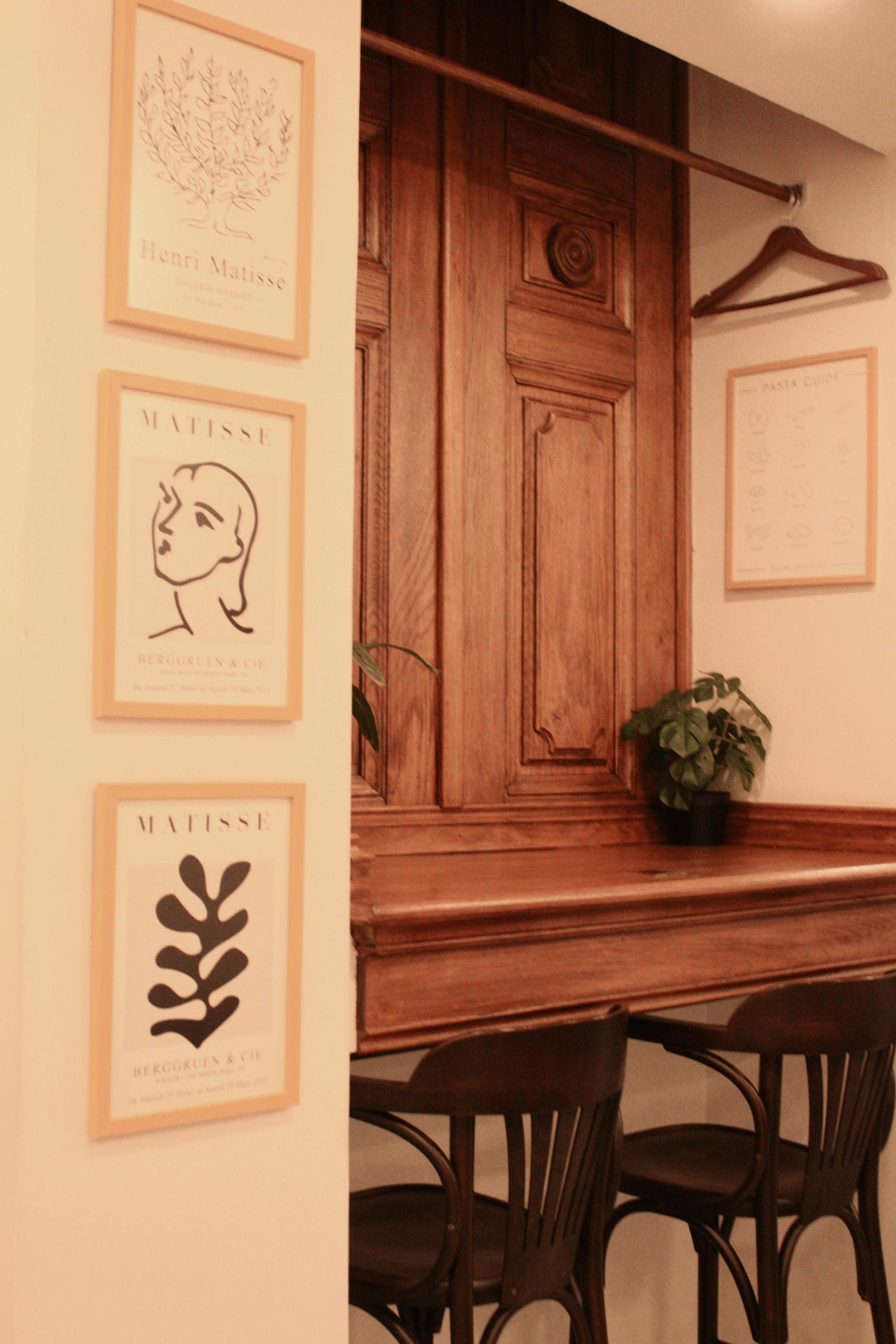Exploring the Tate Modern: Henri Matisse’s “The Snail” (1953) and Jacqueline Humphries’ “~?j.h%” (2018)
The Tate Modern is renowned for its diverse and captivating collection of contemporary and modern art, often presenting visitors with opportunities to experience iconic works in compelling settings. Among these masterpieces, two pieces—Henri Matisse’s The Snail (1953) and Jacqueline Humphries’ ~?j.h% (2018)—reside within the same exhibition space, prompting interest from art enthusiasts and visitors alike.
The Significance of the Works
Henri Matisse’s The Snail is a seminal example of his late-career ventures into cut-out collage techniques, transforming flat shapes into vibrant, organic compositions. Created in 1953, this piece exemplifies Matisse’s mastery in manipulating color and form to evoke movement and rhythm.
Conversely, Jacqueline Humphries’ ~?j.h% offers a contemporary contrast, reflecting modern abstract practices and digital influences. Installed in 2018, Humphries’ work engages with layering, interactivity, and the vibrant energy characteristic of current artistic expressions.
A Curious Overlap in Gallery Placement
What makes this pairing particularly intriguing is that both works are displayed in close proximity within the Tate Modern—specifically in the Natalie Bell Building, Level 2, East Room 12. Despite their shared space, there is a surprising scarcity of images capturing both pieces in a single frame. This absence adds a layer of curiosity for visitors eager to document and share the experience.
Request for Assistance
If you happen to be visiting the Tate Modern soon, your assistance would be immensely valuable. Capturing an image that includes both The Snail and ~?j.h%—ideally showcasing their coexistence—would be greatly appreciated by those eager to visually contextualize this interesting juxtaposition.
Conclusion
The pairing of Matisse’s timeless The Snail with Jacqueline Humphries’ contemporary ~?j.h% exemplifies the dynamic range of the Tate Modern’s collection. Visitors’ photographs and documentation not only serve personal memories but also contribute to the ongoing dialogue surrounding these powerful works. Should you pass by the Tate Modern with your camera, consider capturing this compelling pairing and sharing it with the broader art community.


Fascinating juxtaposition of Matisse and Humphries at the Tate Modern
I find it particularly compelling how the Tate Modern positions such contrasting works—Matisse’s *The Snail* representing the pioneering collage techniques of the 1950s, and Jacqueline Humphries’ *~?j.h%* embodying contemporary digital and abstract practices. This pairing vividly illustrates the expansive evolution of art within a single space, inviting viewers to reflect on how artistic language has transformed over the decades.
The proximity of these pieces offers a unique opportunity for visitors to experience the dialogue between past and present, traditional and experimental. It also prompts the question: how does the context of display influence our perception of these works? I’d love to see more documentation that captures this visual conversation. If anyone manages to get a shot that highlights both, it would be a wonderful resource for those of us who appreciate understanding artworks within their curatorial setting.
Indeed, the Tate Modern continues to be a hub for those interested in exploring the connections across artistic eras, and experiences like this enrich our appreciation of contemporary collections alongside masterpieces of modern art. Looking forward to potentially visiting and witnessing this intriguing pairing firsthand!
Celebrating the Dynamic Art Dialogue at Tate Modern
As a London resident who often visits the Tate Modern, I find this pairing of Henri Matisse’s The Snail with Jacqueline Humphries’ ~?j.h% truly fascinating. It exemplifies how the museum thoughtfully bridges different eras and artistic practices, inviting viewers to reflect on the evolution of abstract expression.
While Matisse’s work celebrates organic forms and vibrant color play through cut-outs, Humphries’ piece introduces a contemporary digital layer, engaging viewers with layered interactivity and energetic textures. Experiencing them side by side enriches our understanding of abstraction’s ongoing relevance and adaptability.
Additionally, the decision to position such works closely prompts a valuable conversation about the continuum of artistic innovation—how artists from vastly different periods interpret movement, rhythm, and emotion through distinct mediums.
For fellow London art lovers, I’d recommend taking your time to admire both pieces, and if possible, capturing a photo of their juxtaposition. Sharing this visual dialogue can deepen appreciation and inspire others to explore the vast spectrum of human creativity housed at our local museum.